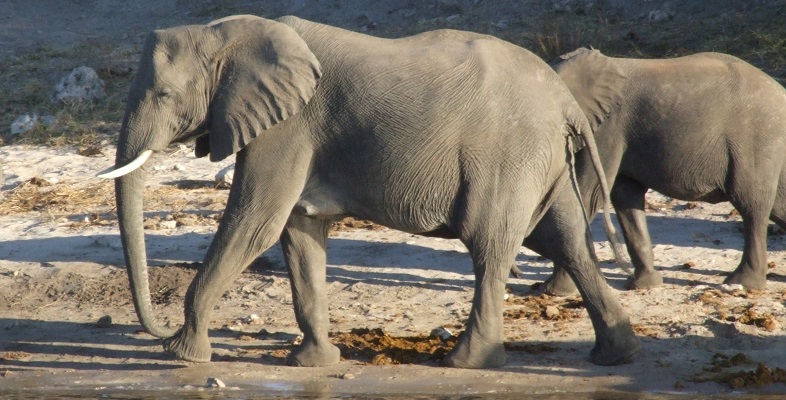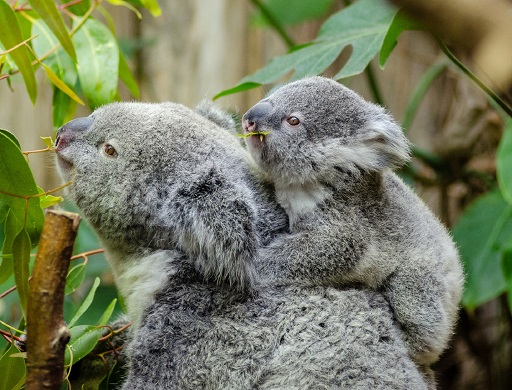5.2 Lactation in marsupials
Production of milk involves considerable biochemical activity within the secretory cells and this activity requires energy. These demands explain why lactation is a very considerable ‘investment’ by the mother in the wellbeing of her offspring. For animals on an unreliable or low-energy diet – the koala is a good example of the latter – synthesis of the constituents of milk can be a precarious operation. Given that the energy (fat) content of koalas’ milk is comparatively low, it’s not surprising that the period of lactation in koalas is unusually long, even by marsupial standards. At the age of five months, young koalas start to ingest eucalyptus leaves that have already been partly digested by the mother.
Lactation in marsupials has a particular importance; for example, the newborn red kangaroo weighs less than a gram (much like the koala newborn mentioned earlier), or less than a lump of sugar. On complete emergence from the pouch, some eight months later, it weighs about four to five kilograms. It may then often double in weight before becoming fully independent of the mother’s milk (i.e. becoming weaned), which happens between four and eight months after leaving the pouch. The composition and flow of milk are tightly controlled; the synthesis of particular nutrients can become switched on as particular genes are activated. (Such genes comprise particular sections of DNA within the nucleus of secretory cells, so minute that not even the highest magnification level in Figure 17 can reveal them.) Towards the end of its time in the pouch, when the rate of the youngster’s growth is very high and the energy demands are greatest, the fat content of the milk in many species reaches a maximum.
At a stage in development where hair growth is important, the youngster’s production of the protein keratin has to be stepped up – keratin is the key ingredient of hair and hair-like structures. At such a time, the kangaroo’s milk contains large amounts of the particular types of amino acid that are essential for the synthesis of keratin.
Question 3
Kangaroos and wallabies generally have four teats within the pouch, though there is only one newborn at a time. Why does the possession of more than one teat make sense?
Answer
Such species have a unique and sophisticated system that allows the production of more than one type of milk, so they are capable of satisfying the varying demands of youngsters at different stages of development. The mechanisms in the mother’s body are not well understood but having separate ‘plumbing’ to each teat means each can act partially independently.
There’s no doubt that the evolution of lactation was crucial to the success of mammals. Of course, milk production is just one component of a ‘package’ of parental care measures shown by many mammals, so it’s perhaps risky to single out a particular feature, but it’s one that raises particular interest.
Question 4
Can you think of some advantages of the lactation habit in mammals?
Answer
Lactation provides nutritional care – the sucklings don’t have to find their own food. In that sense, it helps separate the infant from the vagaries of the environment. Given that feeding is relatively effortless, the youngster’s energy can be largely channelled into growth. It also seems that suckling is an excellent way of transferring immunity from mother to offspring. The early milk of many mammals, humans included, confers a special advantage – it’s especially rich in antibodies. The same is true in marsupials such as kangaroos.

